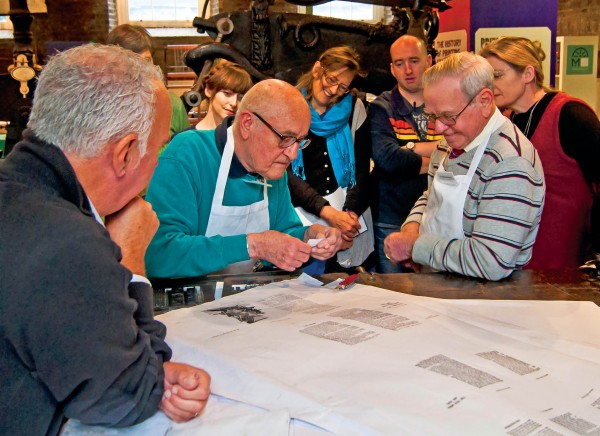
Dublin is enshrined in the popular imagination as a literary city, and there’s a litany of names often invoked as proof of that accolade but, looking past Kavanagh, Joyce, Behan and the guided tour version of the city’s heritage, another vision of Dublin becomes apparent.
Before the ubiquity of mobile internet, TVs, or even radio, the popular culture of the city was in wordplay, parody, popular recitation and legendry. NewsFour spoke with Vincent Caprani, a long-time performer and chronicler of Street Ballads and Pub Pomes.
Vincent (“Call me Vinnie”) began his career apprenticing as a printer in 1950 when the print trade was healthy and diverse all across Dublin, and a motivated person could run off a one-page broadsheet to provide commentary on an event while it was still fresh in the public mind. We might think we have all this and more today with 24-hour rolling news but these were more anonymous times.
These broadsheets would carry verses that could be irreverent or bawdy to the point of minor scandal. An example of this was the controversy (and hilarity) surrounding the Gough’s Statue incident. In 1957, in the Phoenix Park, a bomb was planted on the equestrian statue of Field-Marshall Sir Hugh Gough, a renowned British military leader. Intended to destroy, the bomb damaged the statue such that it had to be removed. Within days of the incident, a satire was circulated titled Gough’s Statue that began with the lines:
There are strange things done from twelve to one
In the hollow at Phaynix Park,
There’s maidens mobbed and gentlemen robbed
In the bushes after dark;
But the strangest of all within human recall
Concerns the statue of Gough,
’Twas a terrible fact, and a most wicked act,
For his b****x they tried to blow off!
The three-verse pome caught on fast and was popularly attributed to Brendan Behan, but Vinnie was the author. Gough’s Statue was a particular favourite of James Plunkett, who enjoyed its mockery of “infantile militarism”.
In 1982, Vinnie self-published a small run of a book entitled Rowdy Rhymes and Rec-im-itations (Doggerel for a departed Dublin). The book, printed “as a nixer” with the aid of friends at a variety of Dublin printing shops, is a record of Vinnie’s own work and other popular verses such as tragic, melodramatic The Sailor from Ringsend by balladeer Paddy Kenny. It was this verse that first sparked Vinnie’s interest in balladry. He explained that, “Dublin has always been a word-of-mouth city, and these verses weren’t created to be put down in print. They were for the craic, and would be recited in pubs and at printer’s lash-ins. I remember as a child, family get-togethers, hooleys, would be fairly frequent in my home. This would have been typical of a lot of houses, so there would be a mix of country songs, music hall numbers, and street ballads circulating in the city.”
While no longer central to the culture, an appreciation remains, enshrined in regular sessions like the Cle Club meetings every Wednesday from 7pm at The Stag’s Head pub, where old balladeers reunite and perform the old standards in the traditional manner and should you happen to be enjoying a drink at O’Reilly’s of Sandymount, have a look around for one of Vinnie’s pieces framed on the wall, and maybe chance your arm at a recital, and see if it catches on.
Above: Vincent showing the art of paste-up for printing.
Image supplied by National Print Museum, Beggar’s Bush.
By Ruairi Conneely

